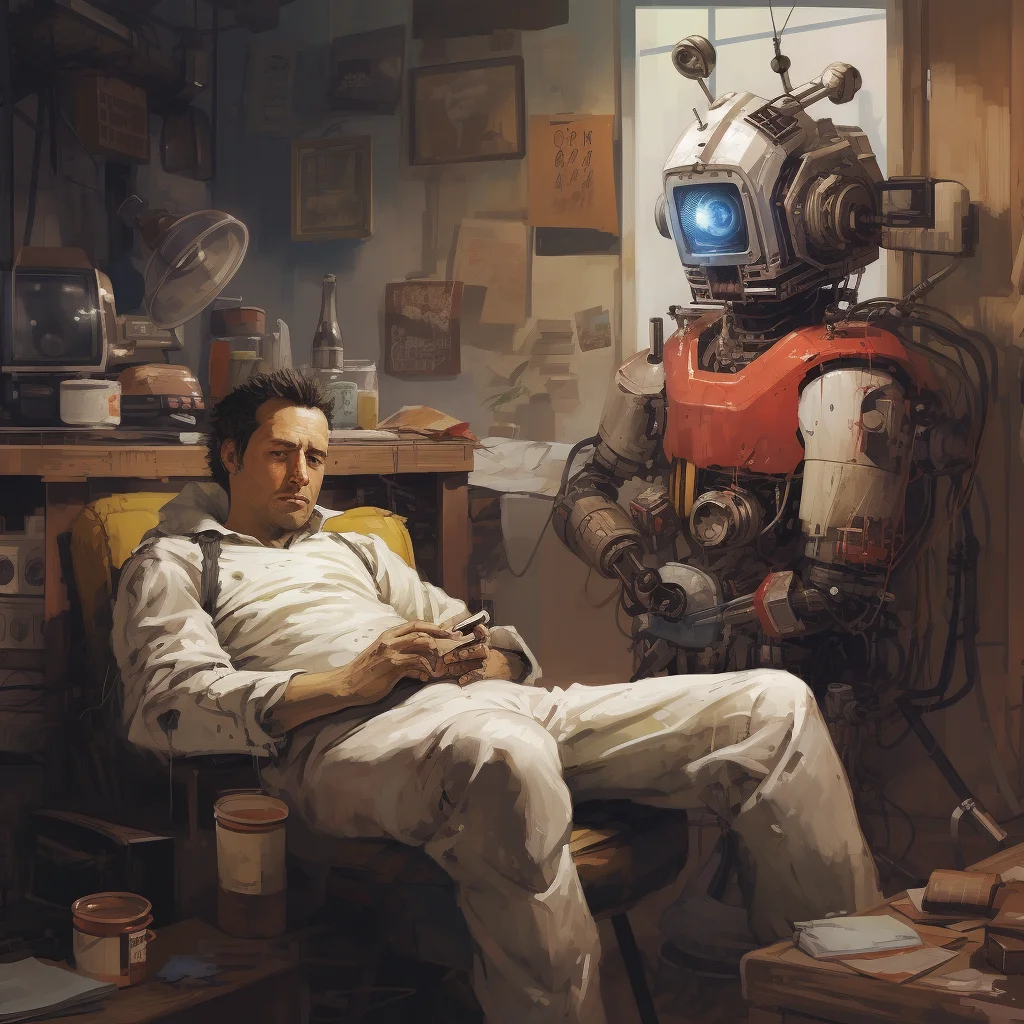As robots increasingly find their way into workplaces, collaborating alongside humans, an intriguing question arises: Do humans tend to slack off when robots are around to help? Recent research suggests that the answer might be more complex than a simple yes or no.
➜ The Phenomenon of “Social Loafing”
It’s a well-known fact in psychology that when individuals work in teams, there’s a tendency for some to exert less effort, especially if they believe their contributions won’t be recognized. This phenomenon, “social loafing,” has been observed in various team settings. But does it apply when the team member is a robot?
Scientists at the Technical University of Berlin decided to delve into this question. “The dynamics of teamwork have always fascinated us. With the rise of robotics in workplaces, it was only natural to explore how human behavior changes in such settings,” commented Dietlind Helene Cymek, the study’s lead author.
“Teamwork is a mixed blessing,” said Cymek. “While collaboration can boost motivation, it can also diminish it, especially when individual efforts blur into the collective. Our curiosity was piqued: Would humans exhibit similar behavioral patterns with robotic teammates?”
➜ The Experiment
The researchers designed an experiment simulating an industrial task: inspecting circuit boards for defects. Participants were provided with images of these boards, which were intentionally blurred. Participants had to use a mouse tool to view the details, allowing the researchers to monitor their inspection patterns.
Interestingly, half of the participants believed they examined boards previously inspected by a Panda robot. Though they didn’t interact directly with Panda, its presence was palpable—they could hear it operating nearby.
➜ The Findings
On the surface, Panda’s presence seemed inconsequential. Both groups—those who believed they were working alongside Panda and those who didn’t—spent similar amounts of time on the task and covered comparable inspection areas. Their self-assessments regarding responsibility, effort, and performance were also alike.
However, a deeper dive into the data revealed a subtle difference. Those in the “Panda group” detected fewer defects as the task progressed, especially after observing that Panda had identified numerous errors. This suggests a potential “autopilot” mindset, where participants, subconsciously relying on Panda’s accuracy, might have been looking without truly seeing.
“It’s one thing to observe, and another to mentally process what’s observed. Our study hints at the possibility that when humans perceive robotic competence, they might, unknowingly, become less vigilant,” remarked Dr. Linda Onnasch, the study’s senior author.
➜ Implications and Concerns
The potential implications of such findings are significant, especially in safety-critical domains. “Even a short 90-minute task showed reduced error detection in the presence of a robot. Imagine the implications in real-world, long-duration tasks, especially in sectors where precision is paramount,” Onnasch cautioned.
However, the researchers acknowledge the study’s limitations. The controlled laboratory setting and the indirect interaction with Panda might not fully replicate real-world scenarios. “To truly gauge the extent of this phenomenon, we need to step out of the lab and into actual workplaces where humans and robots collaborate,” Cymek added.
As the boundaries between human and robotic workforces blur, understanding the nuances of their collaboration becomes crucial. While robots promise efficiency and precision, ensuring that human vigilance and competence aren’t compromised is equally vital. As this study suggests, the journey of human-robot collaboration is filled with intriguing questions, and the answers might shape the workplaces of tomorrow.


